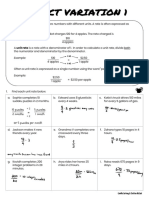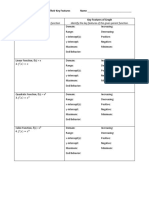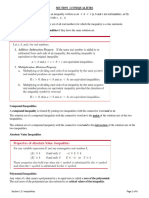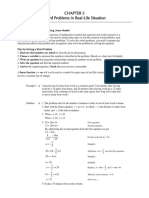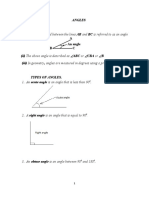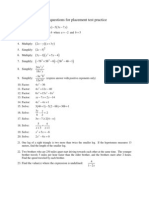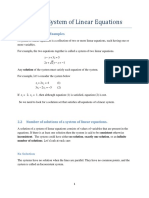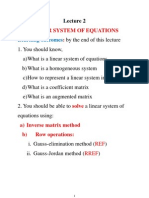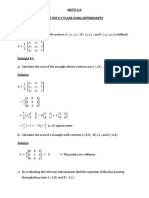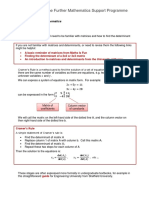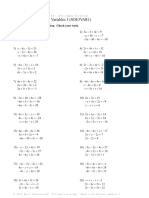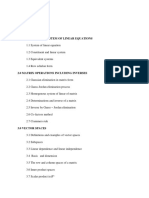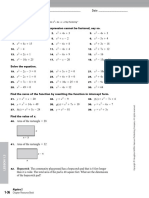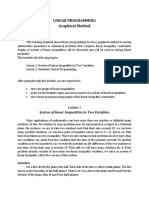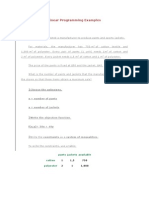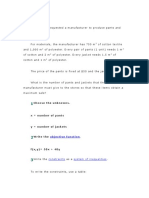0% found this document useful (0 votes)
137 views13 pagesSystems of Linear Inequalities Solved Examples
The document discusses systems of linear inequalities and provides two examples. The first example shows how to graphically represent and solve a system of two inequalities. The solution region is the intersection of the half-planes shaded darker. The second example is about a manufacturer with material constraints on pants and jackets production. It shows how to write the constraints as inequalities, graph the lines defined by the inequalities, and find the feasible solutions region bounded by the intersecting lines.
Uploaded by
Nesrine Ben HamoudaCopyright
© © All Rights Reserved
We take content rights seriously. If you suspect this is your content, claim it here.
Available Formats
Download as PPTX, PDF, TXT or read online on Scribd
0% found this document useful (0 votes)
137 views13 pagesSystems of Linear Inequalities Solved Examples
The document discusses systems of linear inequalities and provides two examples. The first example shows how to graphically represent and solve a system of two inequalities. The solution region is the intersection of the half-planes shaded darker. The second example is about a manufacturer with material constraints on pants and jackets production. It shows how to write the constraints as inequalities, graph the lines defined by the inequalities, and find the feasible solutions region bounded by the intersecting lines.
Uploaded by
Nesrine Ben HamoudaCopyright
© © All Rights Reserved
We take content rights seriously. If you suspect this is your content, claim it here.
Available Formats
Download as PPTX, PDF, TXT or read online on Scribd
/ 13



